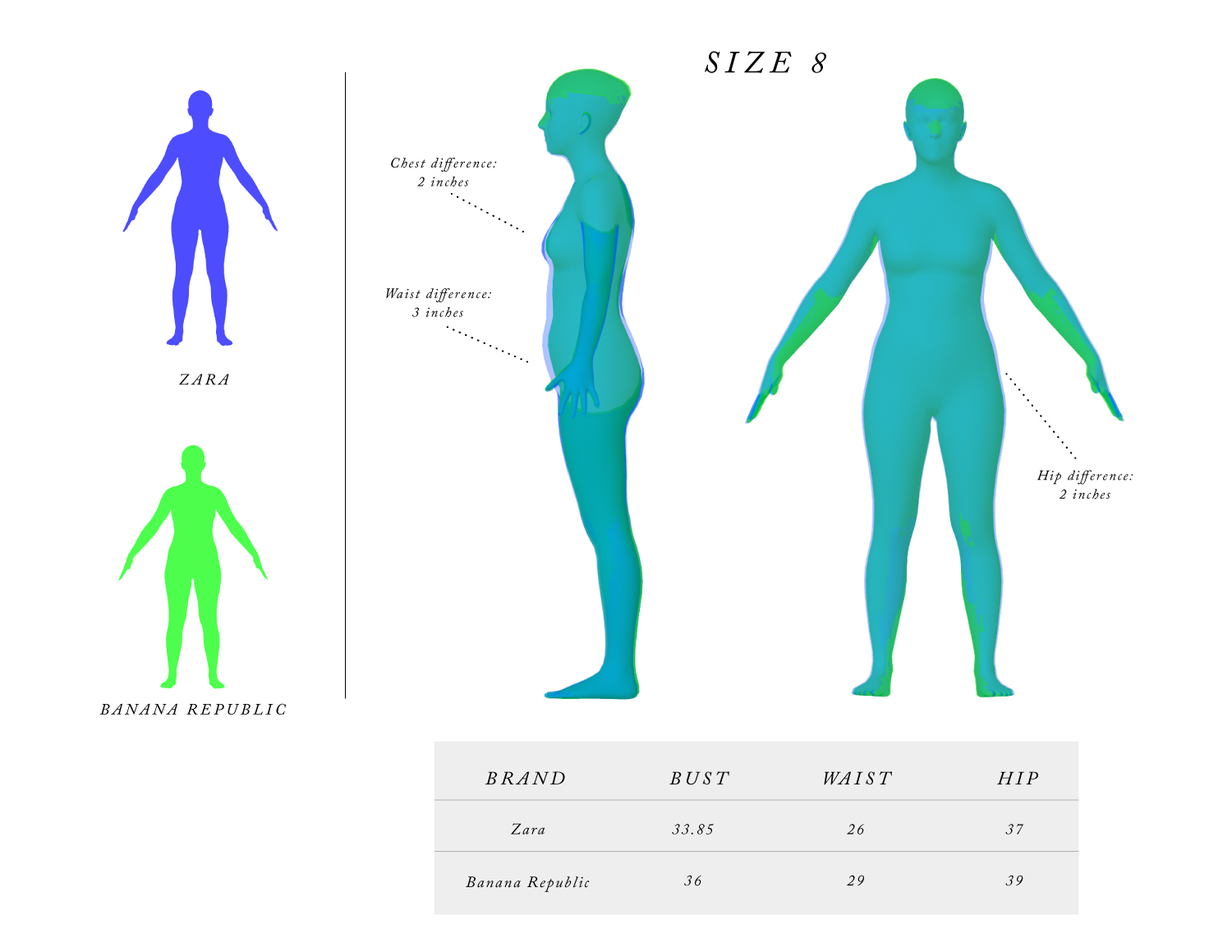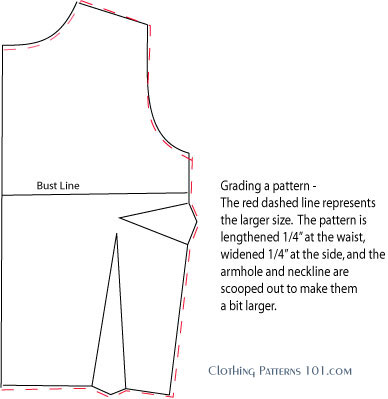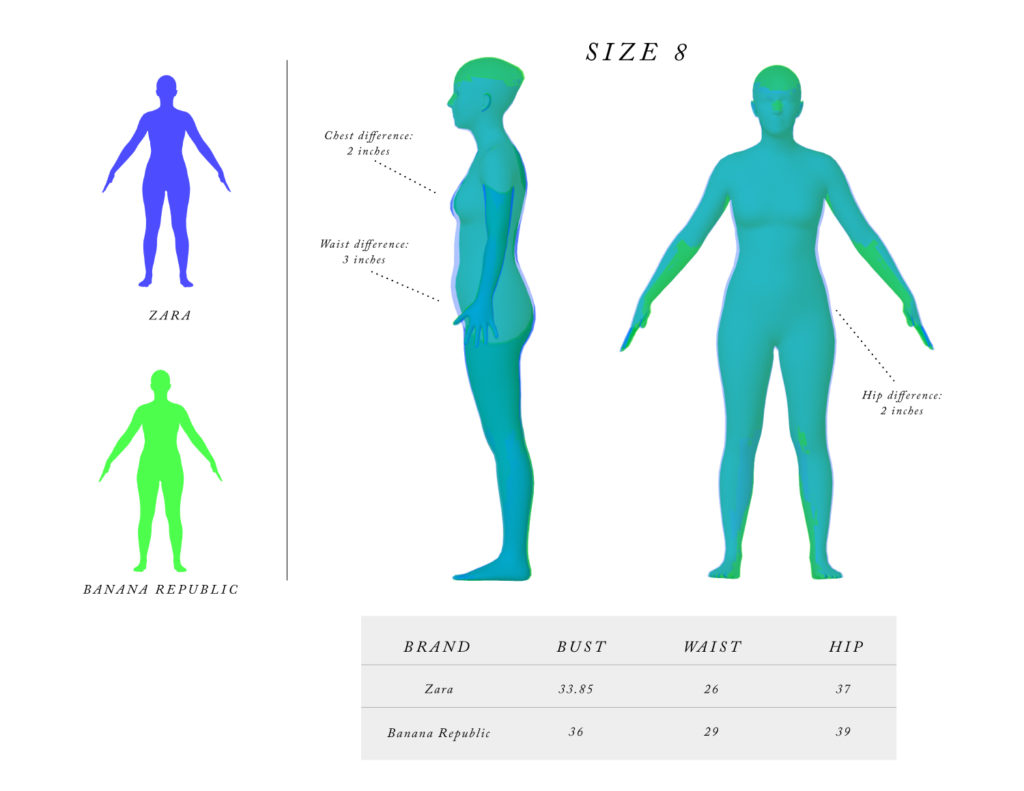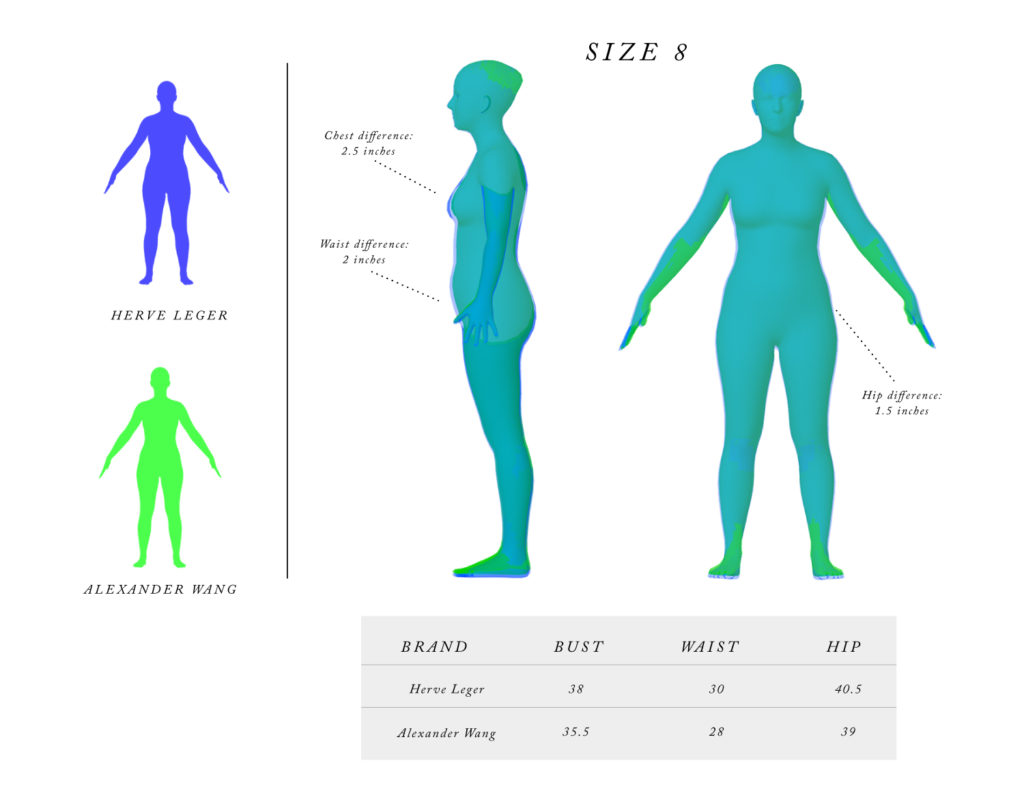
September 24, 2015 Does Size Matter?
Ever wonder why you wear a size 2 at J. Crew, but a size 6 at Givenchy? And, along these same lines, why do you experience a better “fit” with J. Crew clothing than with any other brand? Thanks to vanity sizing and the fit model variations that exist between luxury and mass market companies, it can be difficult to know what size you should buy, especially when making an online purchase of an unfamiliar brand.
HOW ARE GARMENT SIZES DETERMINED?
For the majority of brands, clothing sizes are built off of their fit model — a person who serves as a live mannequin. What this means is that designers first use a model to evaluate the fit and shape of each garment. Then once a garment has been perfected for this particular person, all sizes from 0-14 are graded off of the fit model’s measurements via a set of rules. For example, if a fit model is determined to be a size 8, to grade a dress to a size 10, the bust, waist, and hip of the pattern are made 1-inch larger. As a result one fit model sets the standard upon which all sizes are determined for an entire brand.

The main problem with this grading methodology is that is enlarges a garment linearly, but bodies don’t increase in size in the same way. One person who is a size 4 can have different proportions from a person who is a size 6. A customer who wears a size 6 doesn’t necessarily have waist, bust, and hip measurements that are 1 inch greater than a size 4 customer.
SIZING VARIES AMONG BRANDS
Since the design and grading process results in a unique sizing chart for each brand, it isn’t surprising to see that sizing isn’t consistent across brands. Evidence of sizing differences can be seen in this informative 2011 New York Times chart. A quick look at two brands owned by the Gap shows that sizing is still inconsistent, with a Banana Republic size 8 the equivalent of an Old Navy size 10, as defined by waist measurements. To make things even more confusing, a size 8 at Zara is nearly identical to a size 4 at Old Navy.

SIZE 8 BODY MODELS
Since our technology at Body Labs has the unique capability to create highly accurate 3D digital body models from measurements, we thought it’d be interesting to generate our own size 8 digital fit models with the size chart information from various brands. Using ShapeX, a component of BodyKit, we entered in the measurements of waist, bust, and hip to generate the most statistically accurate 3D body model of a size 8. While a list of measurements gives a limited sense of what a size 8 looks like, a virtual body created from these measurements produces a more complete picture of the dimensions of a brand’s size 8 body.
For example, when comparing the size 8 body models of Zara and Banana Republic, we can see in fine detail how the overall body shapes stack up.

When comparing the size 8 bodies of two athletic apparel brands, you also get a good sense of how they envision the average shape of their target customer. Here, by overlaying the silhouettes of the Lululemon body model with the Adidas body model, we can see that the Adidas size 8 is much smaller overall.
Luxury brands are not immune to these variations between brands, either.

In addition, these body models provide a unique perspective when compared to measurements alone since they not only provide a visual of a complete body, but they also show the proportions of this body. And as most women know, proportions can have a huge effect on fit. For example, a woman with a short torso will wear a shirt quite differently from a woman with a long torso, even if they share the same bust and hip measurements. As Julia Felsenthal further points out in her great Slate article, “Bust measurements on their own are not particularly accurate indicators of a woman’s size or of the rest of her proportions.”
WHAT’S NEXT
In the very near future, with 3D depth scanners implanted in tablets, laptops, and phones, 3D body model imaging will become increasingly accessible to all consumers. This hardware, along with Body Labs’ ability to create body models from these scans, will soon enable consumers to compare their bodies with a brand’s size chart, helping them determine which brand and size best fits their bodies. Simultaneously, brands will also be able to leverage this technology to offer truly custom-made clothing for that elusive perfect fit.